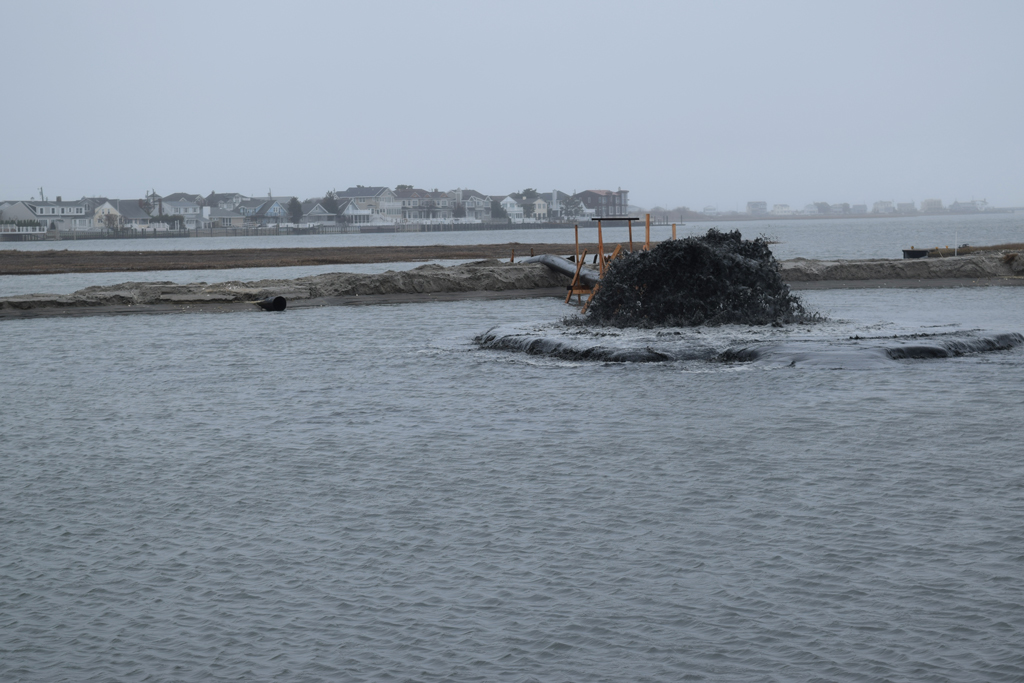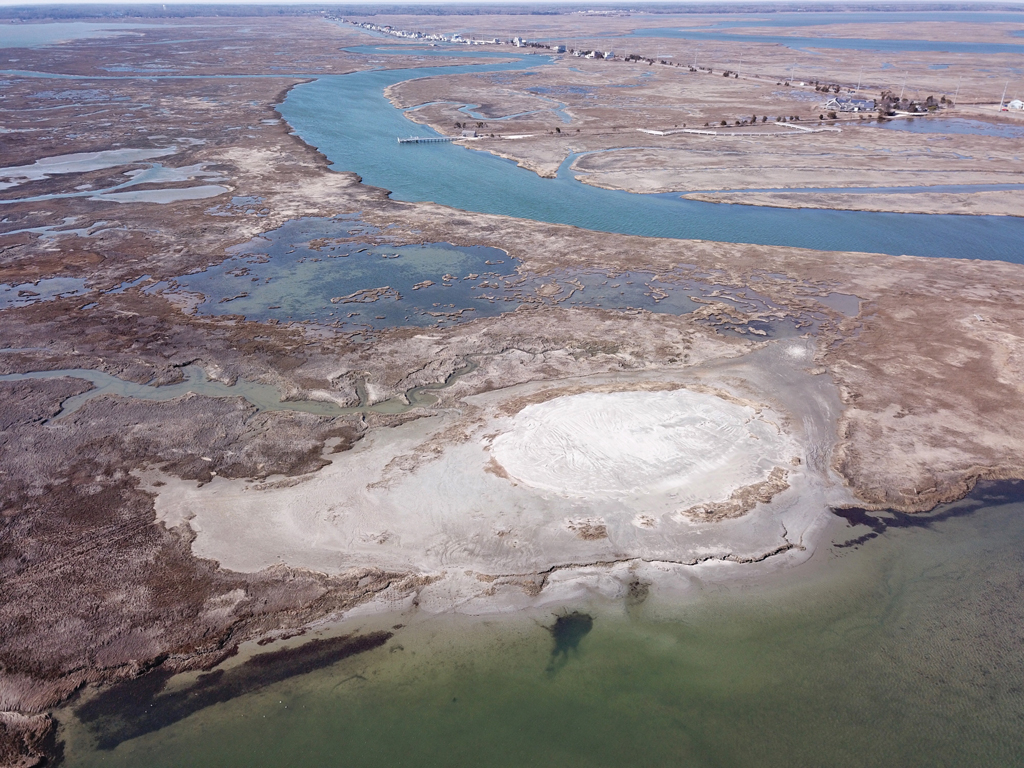by Dr. Lenore Tedesco, Executive Director
For the past 4 years, scientists at The Wetlands Institute have been working as part of a project team that includes the US Army Corp of Engineers, NJ Department of Environmental Protection, The Nature Conservancy and many others working to understand if we can provide ecological benefit to marshes stressed by sea level rise. One of those projects used dredge materials to build a sandy platform to provide alternate nesting habitat for several species of colonial and marsh-nesting birds struggling with nest flooding, habitat loss and disturbance. The Ring Island project was constructed in fall of 2014 and was wonderfully successful with good nesting success of Black Skimmers, Common and Least Terns and American Oystercatchers in 2017.
Over time the size of the habitat was reduced and plant growth was diminishing its value. This winter, we worked with the Army Corp of Engineers to test methods to add more sand to the site. The goal was to marry dredging needs in the Intracoastal Waterway with the need to restore elevation to the habitat and knock back some of the vegetation. The project was incredibly successful and we were able to add sand without impacting the surrounding marsh creating the potential for repetitive recharging of the site and meeting the maintenance dredging needs of the waterway.
Our teams will be monitoring birds at the site for another two years. We are also working to identify other suitable locations to potentially add additional sites as we explore the most effective ways to provide a meaningful boost to populations of these species while balancing the impacts to the marsh, and the dredging needs of our waterways. A delicate balance, but one where we are pleased to be participating.



